Tomatoes are one of the most common fruits in home gardens and commercial agriculture alike. However, the appearance of black spots on tomatoes can be a frustrating and sometimes alarming problem for growers.
These unsightly blemishes not only reduce the aesthetic appeal of the fruit but can also signal deeper issues affecting the plant’s health.
Here’s a detailed discussion on what causes black spots on tomatoes and how to take care and treat them effectively.
Why Are My Tomatoes Turning Black?
Table of Contents
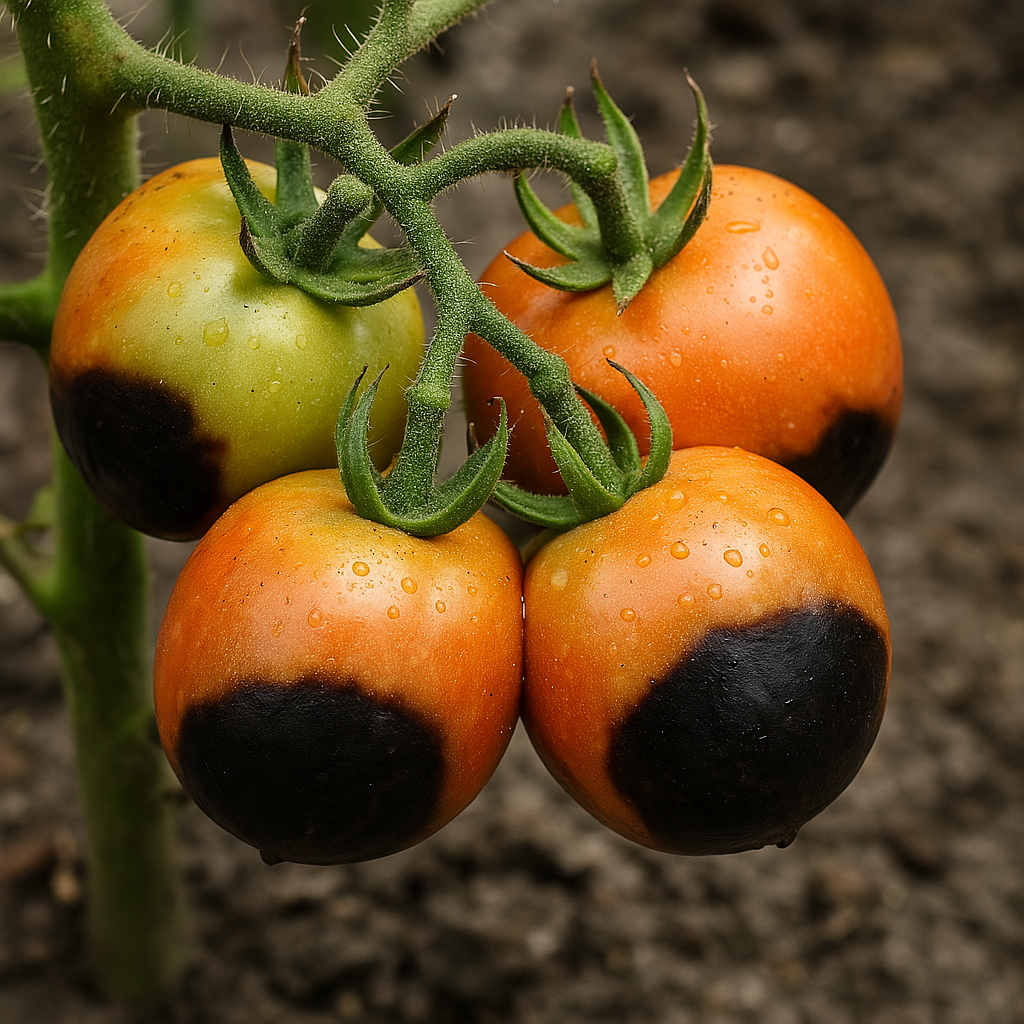
Here are a few common reasons why the tomatoes in your garden can turn black and not grow as expected.
1. Blossom End Rot
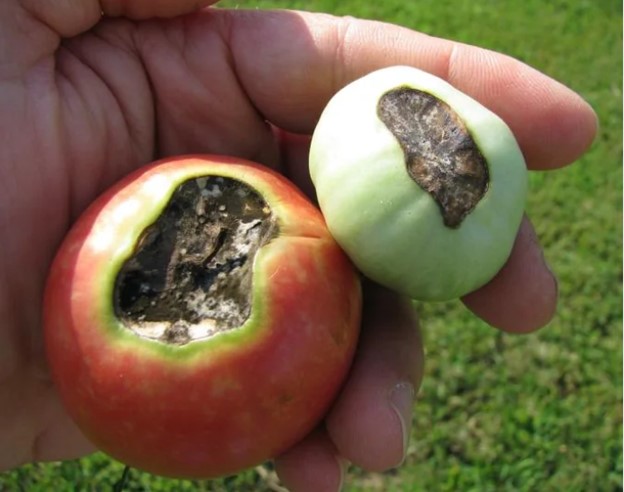
Blossom end rot is one of the most common causes of black spots or brown spots on tomatoes. It typically appears as a sunken, dark patch on the blossom end (bottom) of the tomato.
The main cause is a calcium deficiency in the developing fruit. However, it’s not necessarily due to a lack of calcium in the soil — often, inconsistent watering or poor soil structure prevents proper calcium uptake by the plant.
Contributing factors:
- Fluctuating soil moisture (drought followed by overwatering)
- High nitrogen levels in fertilizer
- Root damage from cultivation
2. Anthracnose
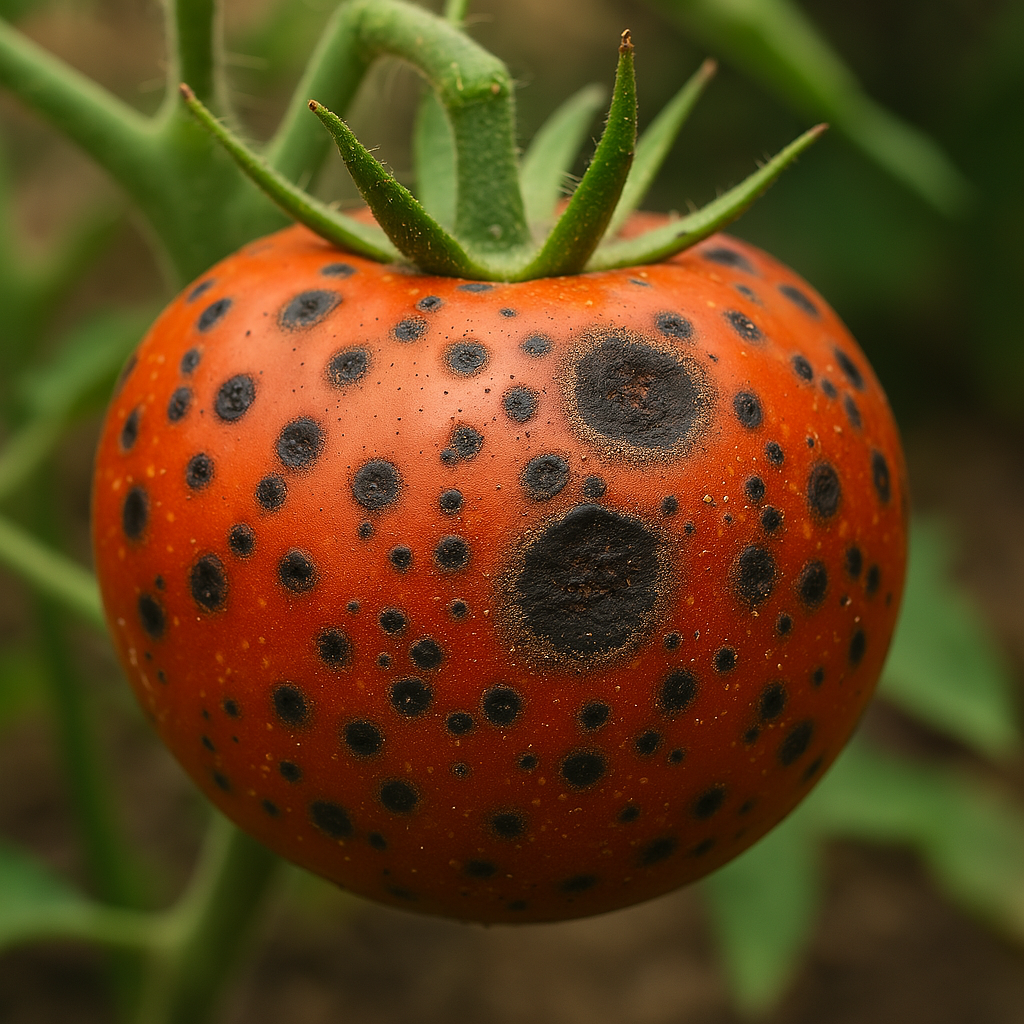
Anthracnose is a fungal disease that causes small, round black spots on ripe or overripe tomatoes. These spots may expand and develop concentric rings. It is caused by the Colletotrichum species and thrives in warm, wet conditions.
Contributing factors:
- Prolonged leaf wetness
- Poor air circulation
- Infected plant debris in the garden
Prevention and treatment:
- Remove and destroy infected fruit and plant debris
- Use disease-resistant varieties when possible
- Apply fungicides if necessary and rotate crops annually
3. Bacterial Speck and Spot
Both bacterial speck and bacterial spot are diseases that can cause black spots on tomato fruits and leaves. These are caused by different species of Pseudomonas and Xanthomonas bacteria. The spots are often small, black or brown, and slightly raised.
Contributing factors:
- High humidity and wet conditions
- Contaminated seeds or transplants
- Overhead irrigation
4. Fungal Diseases: Early Blight and Septoria Leaf Spot
While these diseases typically start on the leaves, they can also affect the fruit under certain conditions.
Early blight, caused by Alternaria solani, can lead to large black or brown spots on both leaves and fruit.
Septoria leaf spot, while usually affecting foliage, weakens the plant and may indirectly contribute to fruit spotting by reducing plant vigor.
Prevention and treatment:
- Prune lower leaves to improve air circulation
- Keep foliage dry and avoid working with wet plants
- Rotate crops and remove infected plant debris
5. Sunscald and Secondary Infections
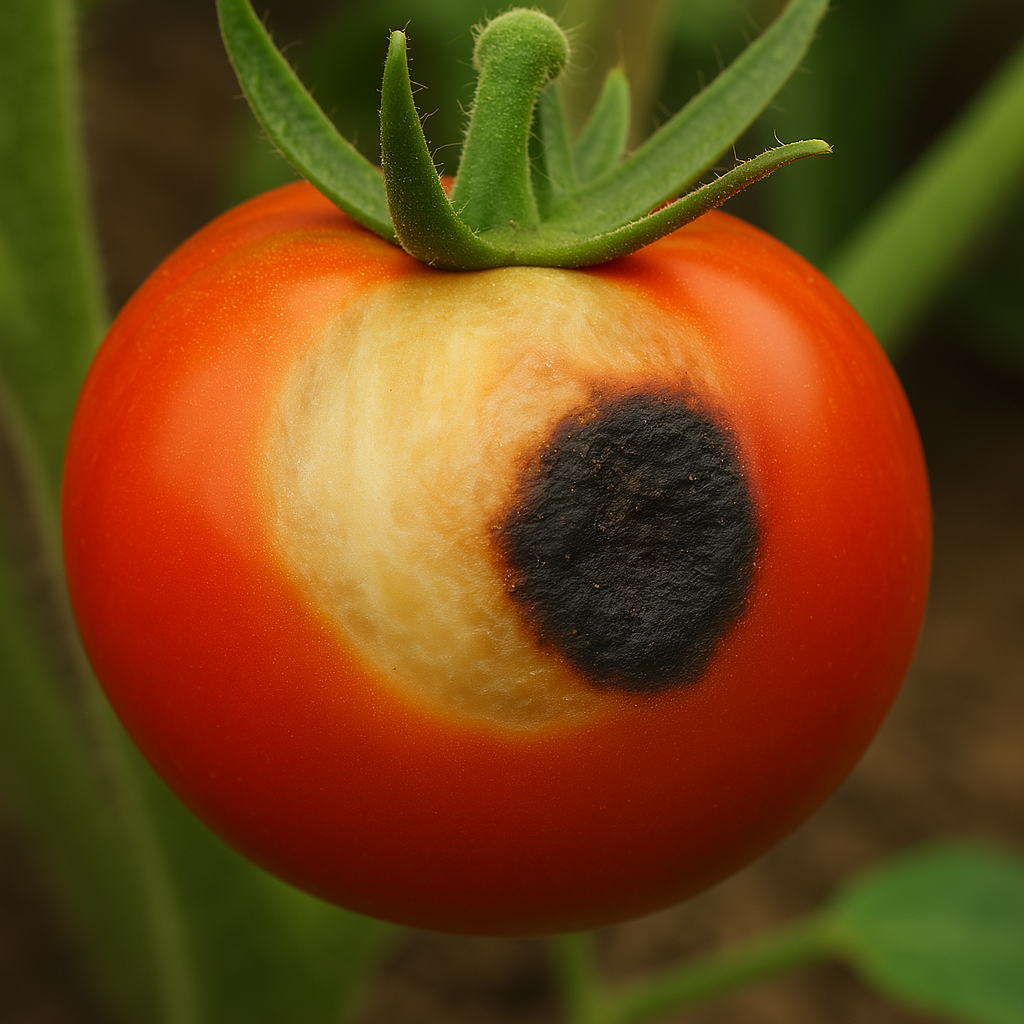
Sunscald occurs when tomatoes are exposed to intense sunlight, especially after heavy pruning or leaf loss due to disease. The affected area starts as a white or yellow patch, which may later become black due to secondary fungal or bacterial infections.
Contributing factors:
- Sudden exposure to full sun
- Poor leaf coverage due to pruning or disease
6. Insect Damage
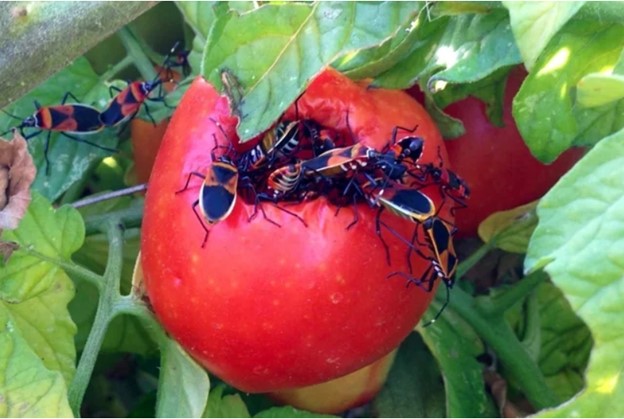
Insects such as stink bugs, fruitworms, and tomato hornworms can puncture the fruit skin, leaving small wounds. These wounds can develop into black spots due to secondary infections or direct damage to the tissue.
Signs and symptoms:
- Tiny holes or sunken spots with dark edges
- Visible insects or frass (insect droppings)
How To Prevent Black Spots On Tomatoes?
Black spots on tomatoes can be caused by a variety of issues—nutrient imbalances, fungal and bacterial diseases, pests, and environmental stress. Preventing these problems requires a holistic and consistent approach to tomato care, from soil preparation to harvest. Here’s an in-depth look at prevention methods:
1. Consistent Watering Practices
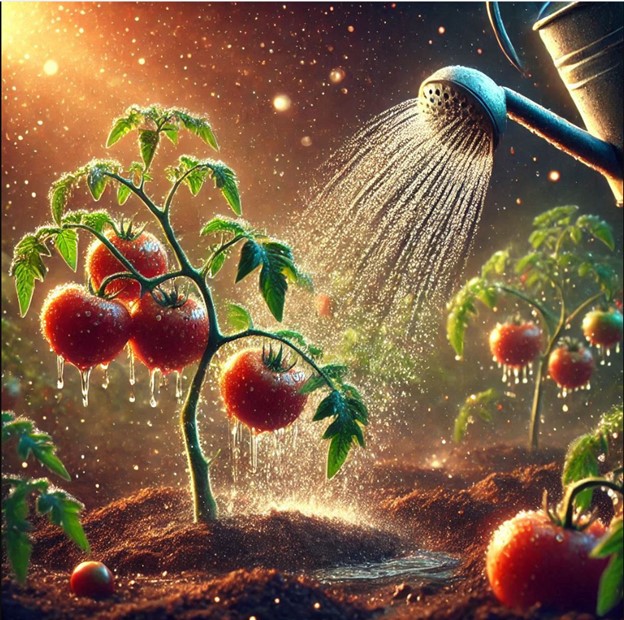
Inconsistent watering is a major contributor to blossom end rot and nutrient uptake problems, especially calcium deficiency.
How to do it:
Water deeply and consistently — aim for 1–1.5 inches of water per week.
Use soaker hoses or drip irrigation instead of overhead watering to keep leaves dry.
Water early in the day to allow the soil to dry before nightfall, reducing fungal disease risk.
Use a moisture meter or check soil by hand to avoid overwatering or underwatering.
2. Mulching
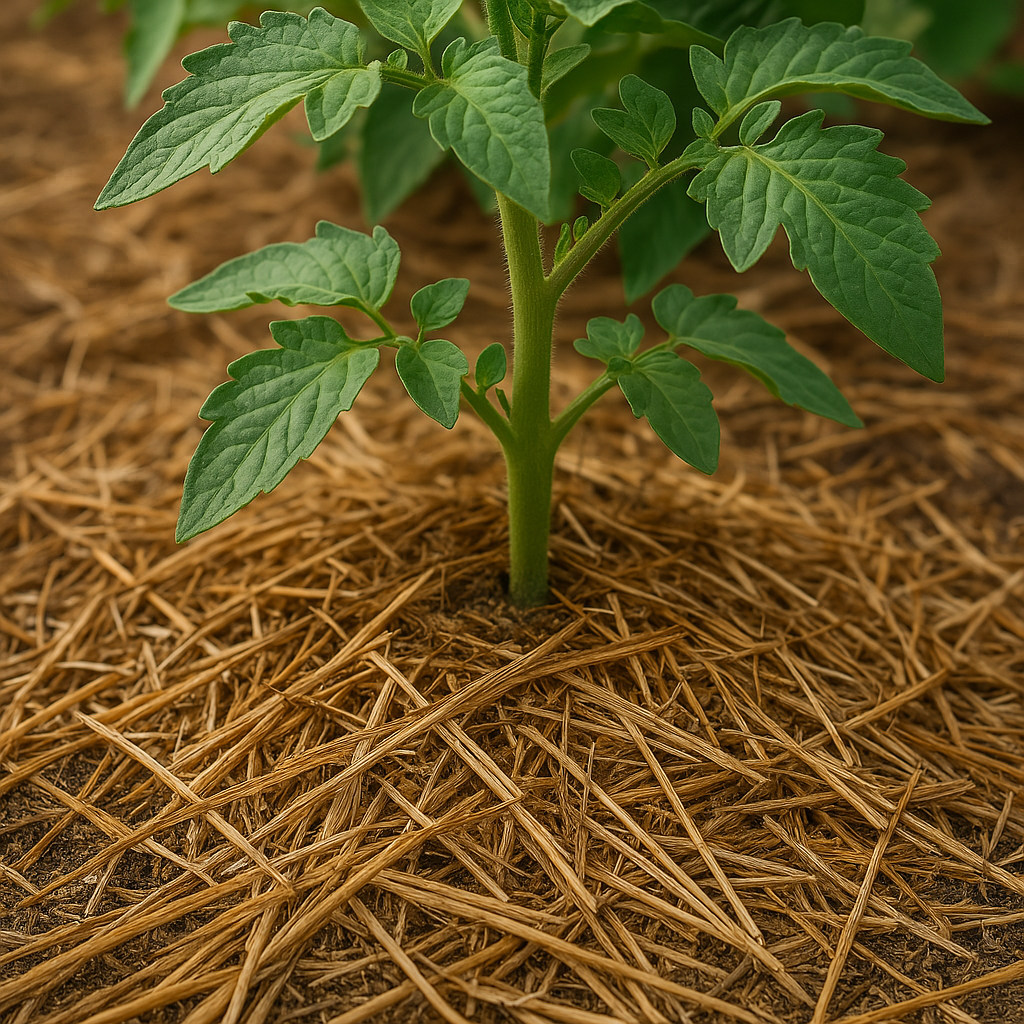
Mulch helps regulate soil moisture, suppresses weeds, and reduces soil splash that can spread fungal spores.
Recommended types:
- Organic – Straw, wood chips, shredded leaves, or grass clippings (make sure they’re pesticide-free)
- Inorganic – Black plastic mulch for heat-loving varieties in cooler climates
Application tips:
- Apply 2–4 inches of mulch around the base of each plant, keeping it a few inches away from the stem.
- Refresh mulch as it decomposes or gets displaced during the season.
3. Proper Plant Spacing and Airflow
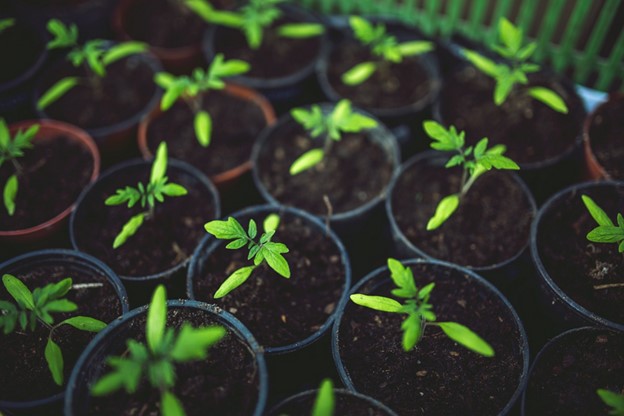
Crowded plants trap humidity, creating an environment ripe for fungal and bacterial diseases like anthracnose and septoria leaf spot.
How to do it:
- Space tomato plants 18–36 inches apart, depending on the variety.
- Support plants with stakes, cages, or trellises to keep fruit off the ground and increase air circulation.
- Prune lower leaves and suckers regularly to improve airflow and reduce disease pressure.
4. Use of Disease-Resistant Varieties
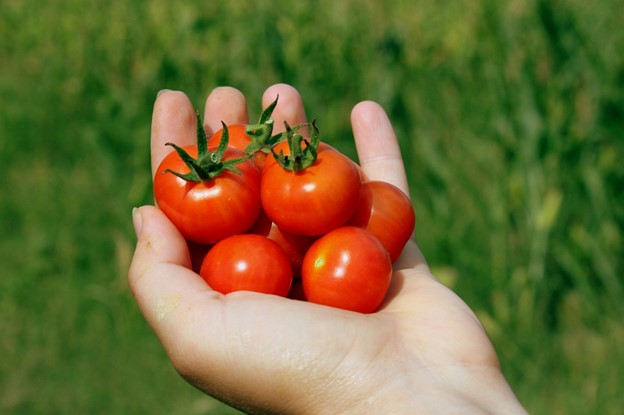
Choosing tomato varieties bred for resistance can drastically reduce the risk of diseases like early blight, bacterial spot, and fusarium wilt.
What to look for:
Check seed packets or labels for disease resistance codes like:
- V – Verticillium wilt
- F – Fusarium wilt
- N – Nematodes
- T – Tobacco mosaic virus
- A – Alternaria (early blight)
5. Regular Soil Testing and Nutrient Management
Blossom end rot and other physiological disorders are often due to calcium deficiencies or imbalanced nutrients.
Prevention steps:
- Conduct a soil test every 1–2 years to monitor pH and nutrient levels.
- Ideal soil pH for tomatoes: 6.0–6.8
- Add lime to raise pH and boost calcium if needed.
- Avoid over-fertilizing with high-nitrogen fertilizers, which can cause lush foliage but poor fruit development and nutrient imbalance.
- Use balanced tomato fertilizers (e.g., 5-10-10 or 10-10-10) and follow label instructions.
6. Crop Rotation
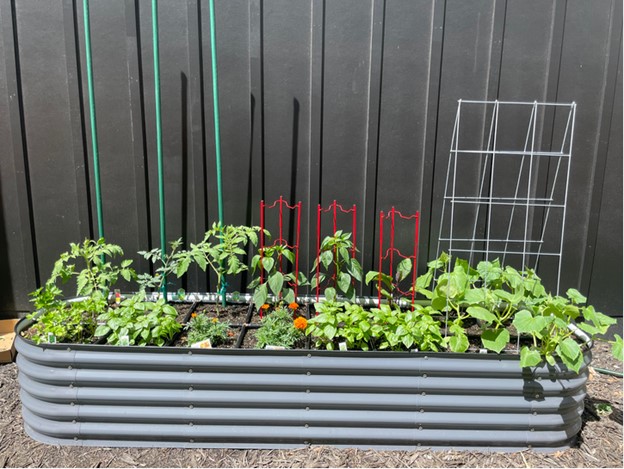
Many tomato diseases, especially fungal ones, persist in the soil for years.
Best practices:
- Rotate crops so that tomatoes (and related plants like peppers, eggplants, and potatoes) aren’t grown in the same spot more than once every 3–4 years.
- Follow tomatoes with non-solanaceous crops like beans, corn, or leafy greens to break disease cycles.
7. Garden Sanitation and Hygiene
Diseases and pests can overwinter in plant debris and garden tools.
Key practices:
- Remove all plant debris at the end of the season.
- Dispose of infected plants away from the compost if disease is present.
- Sterilize garden tools regularly using a 10% bleach solution or rubbing alcohol.
- Keep the garden free of weeds, which can harbor pests and diseases.
8. Prudent Use of Fungicides and Bactericides
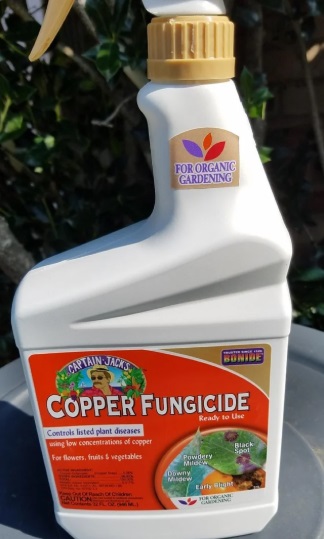
During prolonged periods of wet weather or if disease symptoms begin to appear.
For early prevention in disease-prone areas or with heirloom varieties that lack resistance.
Options:
- Organic – Copper-based sprays, neem oil, baking soda solutions
- Synthetic – Use labeled fungicides or bactericides according to manufacturer instructions.
- Apply at the first sign of disease, and always rotate chemicals to avoid resistance build-up.
9. Pest Control
Insect-feeding wounds can lead to black spots via secondary infections.
Preventive actions:
- Use floating row covers to exclude pests during early growth.
- Inspect plants regularly for pests like stink bugs, fruitworms, or hornworms.
- Introduce beneficial insects (ladybugs, lacewings) to control pest populations.
- Consider organic sprays like insecticidal soap or Bt (Bacillus thuringiensis) as needed.
Wrapping Up
Preventing black spots on tomatoes isn’t about a single solution—it’s about combining good gardening practices, regular monitoring, and early intervention.
With careful attention to water management, plant health, and disease control, you can enjoy a season full of vibrant, spot-free tomatoes.
Leave a Reply